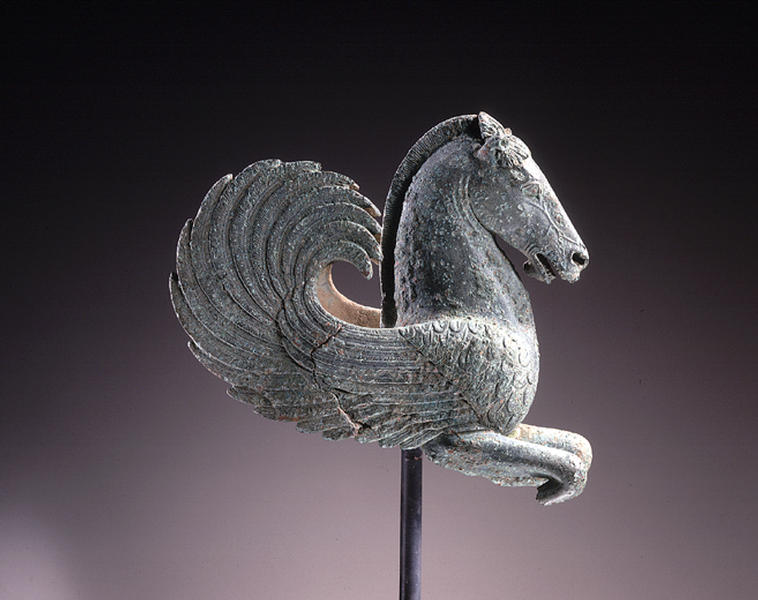Pegasus
- ca. 5th century B.C.
- Bronze
- H-11.5 W-9.5
Catalogue Entry
ca. 5th century B.C.
Bronze
H. 11.5 cm, L. 9.5 cm
This Pegasus image is thought to have originally been an ornament on some object, and for all of its small scale, it is a truly impressive example of detailed sculpture. The point of attachment of the wings, their middle section and their curving tips form a composition that can frequently be seen on such imaginary winged magical beings as the sphinxes, sirens and gorgons seen on Archaic vase painting. The style of the wings on this small Pegasus thus forms a remaining archaic element, while the wings themselves are created in a detailed sense of real wings. The face has a piercing gaze, and the wrinkles around the mouth and point of attachment of the jaw, the nostrils with their raised blood veins are all elements of this detailed expression, with the curved wings giving a sense of tension to the sculpture that adds to its life-like expressive power. These elements all accord with the severe style of the early period in Greek classical art. Similar examples from the same period can be found in the Vatican Museum's Pegasus shaped roof ornament from 5th century BC Etruria. Like the exhibited work, the Vatican Pegasus has the severe early classical Greek style combined with elements of the Archaic style. According to Greek myth, the immortal winged horse Pegasus was born from the blood of Medusa and was raised by the hero Bellerophon and engaged in fighting off monsters. The hero competed with the gods and this angered Zeus, who struck down the horse, turning Pegasus into the beast of burden who carried lightning bolts at Zeus's palace. This small sculpture gives a realistic depiction of the sacred horse's majesty as he appeared in the world of myth, and can be said to reveal the highest levels of refined artistry of this period.
